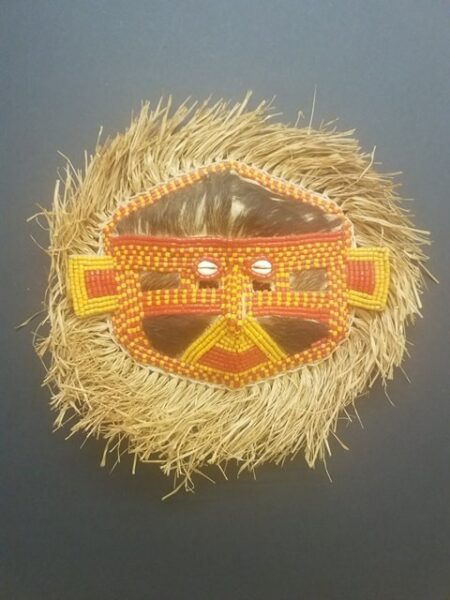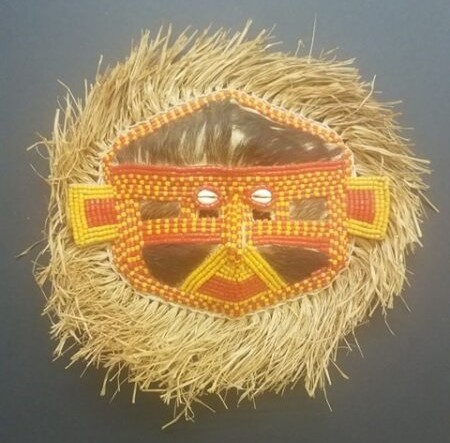This mask is a modest version of the Mukyeem Helmet mask that is made by the Kuba cultures of Central Africa. Most Mukyeem masks are large, elaborate structures that envelop the head, and they may be identified by the rich, symbolic materials used to make them. The masks typically incorporate leather and fur to represent powerful wild animals; elaborate and colorful beadwork to represent the wealth of labor and imported goods; and cowrie shells, which in the past was used as currency, and today is still used to symbolize wealth. The Mukyeem mask is a prestigious work that is commissioned, owned, and worn by people of high status in the community, as the mask is worn in traditional masquerades and rituals to represent the character Woot, the original Kuba ancestral king.
While this Mukyeem mask is smaller than most, its careful workmanship and materials reveal its prestigious use and symbolism. While it is made of woven basketry, it is carefully lined with soft cloth. It incorporates three areas of thick animal fur on leather, and it has an elaborate, symmetrical pattern of skilled beadwork covering a large part of the surface. Finally, just above the eye holes are two pristine cowrie shells that represent both the character’s eyes and the ancient wealth of the Kuba.

Kuba culture
20th century
Raffia, fur, and plastic beads, L. 29 cm x W. 2.5 cm x H. 27 cm
BFPC collection # 2016.28
For more information, you may contact the researcher(s) noted in the title of this exhibit entry, or Dr. Billie Follensbee, the professor of the course, at BillieFollensbee@MissouriState.edu

